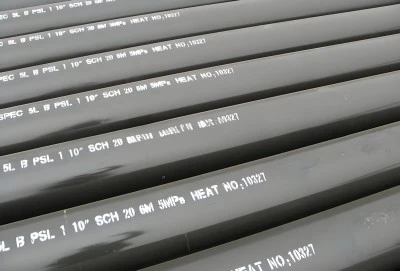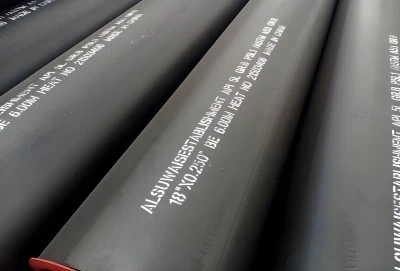In the world of pipeline manufacturing and transportation, API 5L pipes play a crucial role. These pipes, governed by the American Petroleum Institute's (API) specifications, are widely used in the oil and gas industry for transporting fluids over long distances. Among the various specifications, API 5L PSL1 pipes are particularly noteworthy. In this comprehensive guide, we'll explore the differences between PSL1 and PSL2 pipes, delve into the welding processes, discuss weld heat treatment, and examine pipe end treatment techniques.
|
|
|
PSL1 vs PSL2 Pipe: Understanding the Dfferences
API 5L pipes are categorized into two Product Specification Levels (PSL): PSL1 and PSL2. While both types are used in pipeline applications, there are significant differences in their manufacturing processes, quality control measures, and end-use applications.
API 5L PSL1 pipes are the standard grade pipes that meet the basic requirements of the API 5L specification. These pipes are suitable for less demanding applications and are often used in general-purpose pipelines. On the other hand, PSL2 pipes are manufactured to more stringent requirements and are typically used in critical applications where higher performance and safety standards are necessary.
Key differences between PSL1 and PSL2 pipes include:
- Chemical Composition: PSL2 pipes have tighter controls on chemical composition, particularly for carbon, phosphorus, and sulfur content.
- Mechanical Properties: PSL2 pipes generally have higher strength requirements and tighter tolerances for yield strength and tensile strength.
- Testing Requirements: PSL2 pipes undergo more extensive testing, including fracture toughness tests and through-thickness tensile tests for larger diameter pipes.
- Traceability: PSL2 pipes require full traceability from the steel production to the finished pipe, while this is not mandatory for PSL1 pipes.
Despite these differences, API 5L PSL1 pipes remain a popular choice for many applications due to their cost-effectiveness and suitability for less demanding environments. The selection between PSL1 and PSL2 pipes ultimately depends on the specific project requirements, environmental conditions, and safety considerations.
Welding Process: Ensuring Structural Integrity
The welding process is a critical aspect of manufacturing API 5L PSL1 pipes. It directly impacts the pipe's structural integrity, durability, and performance in the field. Several welding methods are employed in the production of these pipes, each with its own advantages and applications.
Electric Resistance Welding (ERW) is one of the most common methods used for smaller diameter API 5L PSL1 pipes. In this process, the pipe is formed from a flat steel strip, and the edges are joined using electrical current to generate heat. The heated edges are then pressed together to form a high-strength weld. ERW is known for its high production speeds and consistency in weld quality.
For larger diameter pipes, Submerged Arc Welding (SAW) is often the preferred method. SAW can be used for both longitudinal and spiral welded pipes. In this process, an electric arc is created between the welding wire and the pipe material, with the entire welding operation taking place under a blanket of granular flux. This method produces high-quality welds with excellent mechanical properties.
Regardless of the welding method used, strict quality control measures are implemented to ensure the welds meet the API 5L specifications. These include visual inspections, non-destructive testing methods such as ultrasonic testing or radiographic testing, and mechanical tests to verify the weld's strength and integrity.
It's worth noting that while welding is a crucial step in pipe manufacturing, API 5L PSL1 pipes can also be produced using seamless methods. Seamless pipes are formed by piercing a solid steel billet to create a hollow shell, which is then rolled and stretched to the desired dimensions. These pipes do not have a weld seam, which can be advantageous in certain high-pressure or corrosive environments.
Weld Heat Treatment and Pipe End Treatment: Enhancing Performance
After the welding process, API 5L PSL1 pipes often undergo additional treatments to enhance their performance and ensure they meet the required specifications. Two critical processes in this stage are weld heat treatment and pipe end treatment.
Weld heat treatment is a process applied to the welded area of the pipe to relieve residual stresses created during the welding process. This treatment helps to improve the pipe's overall mechanical properties and reduces the risk of stress corrosion cracking. The most common heat treatment method for API 5L PSL1 pipes is normalizing, which involves heating the pipe to a specific temperature above its critical point and then allowing it to cool in air. This process helps to refine the grain structure of the steel, improving its strength and toughness.
In some cases, particularly for higher-grade API 5L pipes, quenching and tempering may be employed. This process involves rapidly cooling the pipe from high temperature (quenching) followed by reheating to a lower temperature (tempering). This treatment results in a fine-grained microstructure with excellent strength and toughness properties.
Pipe end treatment is another crucial step in the manufacturing process of API 5L PSL1 pipes. The ends of the pipes are prepared to facilitate easy and secure joining during pipeline construction. Common end treatments include:
- Plain Ends: The pipe ends are cut square and left as-is. This is the most basic form of end treatment.
- Beveled Ends: The pipe ends are cut at an angle, typically 30 or 37.5 degrees, to prepare them for welding in the field.
- Threaded Ends: For smaller diameter pipes, the ends may be threaded to allow for screwed connections.
- Flanged Ends: Flanges may be welded or threaded onto the pipe ends for bolted connections.
The choice of end treatment depends on the specific application, joining method to be used in the field, and customer requirements. Proper end treatment ensures that the pipes can be efficiently and securely joined during pipeline construction, minimizing the risk of leaks and failures at the joints.
Contact Longma Group
API 5L PSL1 pipes play a vital role in the oil and gas industry, providing a cost-effective solution for various pipeline applications. While they may not meet the stringent requirements of PSL2 pipes, they offer reliable performance for less demanding environments. The careful consideration of welding processes, weld heat treatment, and pipe end treatment ensures that these pipes meet the necessary standards for durability, safety, and performance.
As technology advances and industry needs evolve, continuous improvements in manufacturing processes and quality control measures are being implemented to enhance the capabilities of API 5L PSL1 pipes. This ongoing development ensures that these pipes will continue to meet the changing demands of the pipeline industry for years to come.
Are you in need of high-quality API 5L PSL1 pipes? Look no further than Longma Group! We offer a wide range of grades, including B, X42, X46, X52, X56, X60, X65, X70, and X80. Our pipes are available in outer diameters from 1/8" to 80" and thicknesses ranging from SCH10 to SCH160. What's more, we can provide the fastest delivery time of just 7 days or more. Rest assured, our products come with API 5L Certificate, ISO Certificate, QMS Certificate, and more. Don't miss out on this opportunity. Contact us at info@longma-group.com today and let's make your project a success together!














